Unlocking the Secrets of Blue Painter's Tape for Impeccable DIY Results
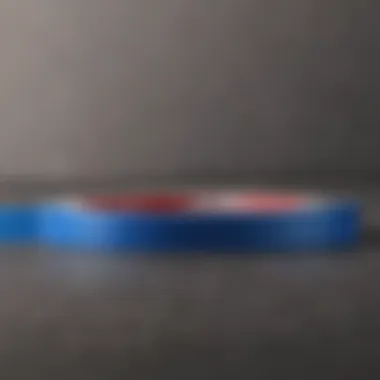
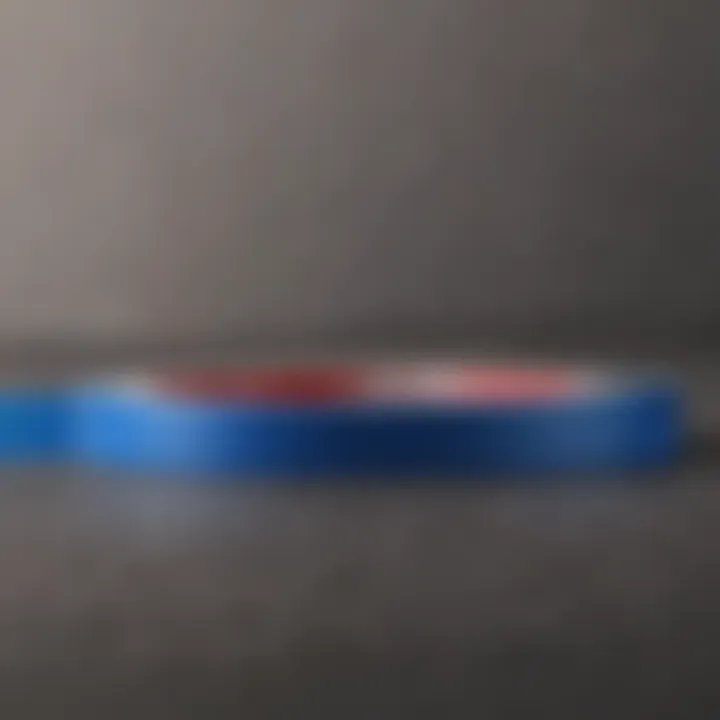
Overview of Topic
In the realm of the home improvement industry, the use of blue painter's tape emerges as a pivotal tool for ensuring precise and professional results. This versatile tape, known for its distinctive blue hue, plays a critical role in various DIY projects and painting endeavors. Unlike traditional masking tape, blue painter's tape is designed with special adhesives that prevent paint bleeding and ensure clean, sharp lines. Its ability to be easily removed without leaving behind adhesive residue makes it a favorite among homeowners and professionals alike.
Common Challenges and Solutions
When delving into the world of DIY projects and painting, homeowners often encounter common challenges associated with the application and removal of painter's tape. One prevalent issue is the seepage of paint under the edges of the tape, resulting in messy lines and an unfinished look to the painted surface. To combat this, it is essential to ensure proper tape adhesion by firmly pressing down the edges and choosing the right tape thickness for the specific project at hand. Other challenges include tape residue left behind after removal and difficulties in achieving straight lines on textured surfaces. To address these issues, it is recommended to use high-quality blue painter's tape specifically designed for delicate surfaces, ensuring easy removal without damaging underlying paint or leaving sticky residues. Additionally, employing techniques such as burnishing the tape edges with a putty knife can help create a better seal to prevent paint seepage and achieve crisp lines.
Product Recommendations
In the vast market of home improvement products, several industry-leading brands offer top-quality blue painter's tape tailored to various needs. Among the highly recommended brands are 3M ScotchBlue, FrogTape, and Duck Clean Release. These products stand out for their superior adhesion, clean release capabilities, and compatibility with a wide range of surfaces, including delicate wallpapers and freshly painted walls.
3M ScotchBlue painter's tape, renowned for its sharp paint lines and clean removal, is ideal for achieving professional results on smooth surfaces such as walls and ceilings. FrogTape, equipped with PaintBlock Technology, ensures sharp lines and minimized paint bleed, making it a preferred choice for intricate design work and accent walls. Duck Clean Release painter's tape offers gentle adhesion and residue-free removal, making it suitable for use on delicate surfaces like trims, moldings, and freshly painted walls.
Step-by-Step Guides
To master the art of using blue painter's tape effectively, it is crucial to follow a systematic approach that guarantees precision and seamless results. Begin by thoroughly cleaning and prepping the surface to be painted, ensuring it is dry and free of dust or debris. Next, measure and cut the appropriate lengths of painter's tape, applying them along the edges or areas to be protected.
For achieving sharp paint lines, press down firmly on the edges of the tape using a smoothing tool or a putty knife to create a tight seal. Take extra care when taping corners and curves, ensuring the tape is smoothly applied without wrinkles or air bubbles. Once the tape is in place, proceed with painting, taking caution not to apply excessive pressure that can cause paint to seep under the tape.
Introduction
Blue painter's tape is a valuable tool in the world of DIY projects and painting tasks, renowned for its precision and ease of use. Understanding how to maximize the potential of blue painter's tape can significantly enhance the quality of your work, ensuring clean lines and professional finishes with minimal effort. This article aims to delve deep into the art of using blue painter's tape, offering expert tips and techniques for achieving flawless results in your painting endeavors.
Understanding Blue Painter's Tape
Composition and Features
Blue painter's tape is specially designed with a unique composition that sets it apart from traditional masking tapes. Its key characteristic lies in the delicate balance between adhesive strength and removability. This feature allows the tape to adhere securely to surfaces without causing damage upon removal, making it an ideal choice for delicate painting applications. The composition of blue painter's tape ensures clean lines and prevents paint bleed, resulting in crisp and professional-looking finishes.
Benefits in Painting
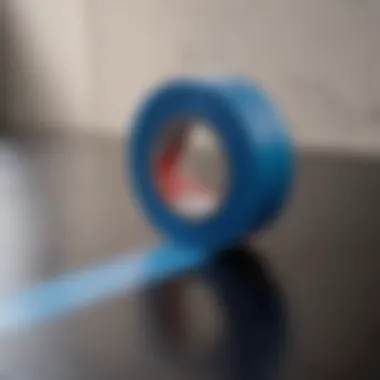
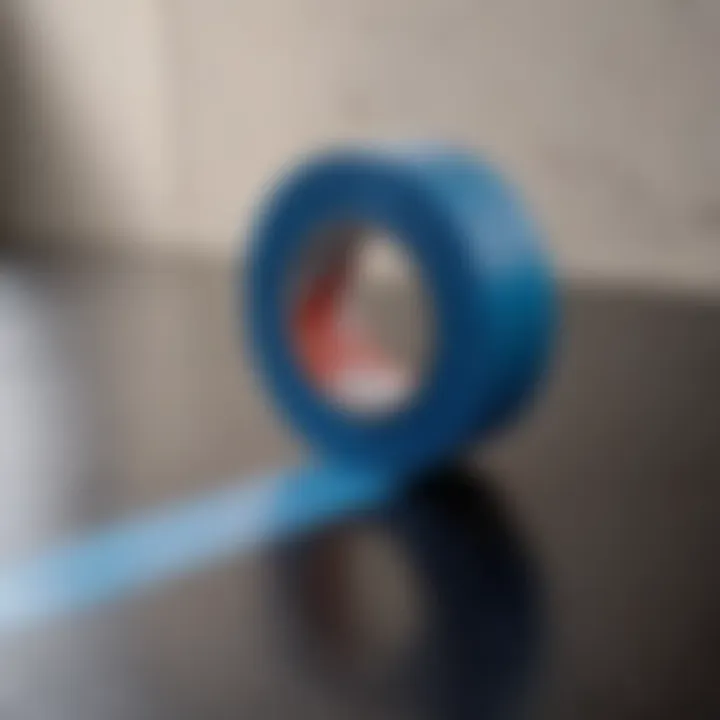
The benefits of using blue painter's tape in painting projects are manifold. Its exceptional adhesive properties enable painters to create sharp edges and defined boundaries with ease. Unlike standard tapes, blue painter's tape is designed to resist paint seepage, ensuring that your edges remain clean and precise. Additionally, this tape is compatible with a wide range of surfaces, including walls, trim, and delicate materials like wallpaper, making it a versatile tool for various painting tasks.
Types of Surfaces Suitable
Blue painter's tape is suitable for a diverse range of surfaces, making it a go-to choice for painters working on different projects. Whether you are painting on smooth walls, textured ceilings, or wood trims, this tape adheres seamlessly, ensuring a neat finish every time. Its versatility extends to various materials, including drywall, glass, metal, and even lacquered surfaces, providing painters with the flexibility to use it in multiple settings and applications.
Essential Tools and Materials
Blue Painter's Tape Varieties
When selecting blue painter's tape, consider the different varieties available on the market to choose the most suitable option for your project. Varieties include different widths and adhesive strengths, tailored for specific painting needs. Thicker tapes are ideal for masking off broader areas, while thinner tapes allow for precision in detailed work. Understanding the varieties of blue painter's tape ensures that you can select the perfect match for your painting requirements.
Additional Supplies Needed
In addition to blue painter's tape, several supplementary materials are essential for a successful painting project. These may include primer for preparing surfaces, quality paint for a durable finish, brushes or rollers for application, and protective gear like gloves and goggles. Having a comprehensive set of supplies ensures that you can approach your painting task with confidence and efficiency, ultimately leading to exceptional results.
Preparation and Surface Treatment
When embarking on a painting project, one cannot ignore the critical phase of Preparation and Surface Treatment, an essential pillar in ensuring a successful and aesthetically pleasing end result. Preparation lays the foundation for a flawless finish, emphasizing the significance of a clean and well-primed surface. It involves meticulous steps such as thorough cleaning to remove dust, grime, and any imperfections that might compromise the paint's adherence. Surface Treatment, on the other hand, focuses on priming, sealing, and smoothening the surface, readying it to receive the paint application. This dual process sets the stage for impeccable paint adhesion and longevity.
Cleaning and Priming
Surface Preparation
One of the key components of the Preparation phase is Surface Preparation. It involves meticulously cleaning the area to be painted, removing any existing paint residues or contaminants that could affect the new coat's adherence and finish. This step often entails washing walls, sanding rough patches, and filling in cracks or holes to create a seamless canvas for painting. Surface Preparation is indispensable in achieving a professional-looking result, ensuring that the paint bonds effectively and uniformly, without blemishes or adhesion issues.
Priming Guidelines
Priming Guidelines are essential directives to follow before applying the actual paint. Priming serves as a protective layer between the surface and the paint, enhancing the color vibrancy, adhesion, and durability of the final finish. By applying primer, one seals porous surfaces, evens out previous paint colors, and promotes better paint coverage. Following specific Priming Guidelines outlined for different surfaces and paint types is crucial in achieving optimal results. Adhering to these guidelines guarantees a smoother painting process, reduces the number of coats needed, and enhances the overall finish, making it essential for a flawless outcome.
Proper Application Techniques
Tape Placement
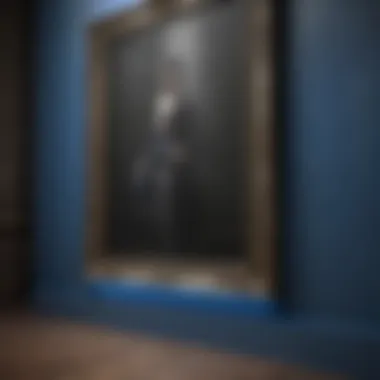

Tape Placement plays a pivotal role in achieving clean lines and protecting areas where paint should not reach. Careful and strategic placement of blue painter's tape along edges, corners, and surfaces helps define boundaries for accurate paint application. It prevents overlapping, bleeding, and smudging, ensuring precise and sharp edges. Successful Tape Placement requires attention to detail, patience, and precision, ultimately contributing to a polished and professional-looking finish.
Avoiding Bubbles
Bubbles are the nemesis of a smooth paint finish, often occurring due to trapped air or improper tape application. Avoiding Bubbles is crucial in achieving a seamless result, free from imperfections. Techniques such as gently pressing the tape onto the surface, using a putty knife to seal edges, and working in small sections at a time can help minimize bubble formation. By mastering the art of Bubble Avoidance, painters can elevate the quality of their work and achieve flawless results that exude professionalism.
Ensuring Secure Adhesion
Ensuring Secure Adhesion of blue painter's tape is imperative for clean lines and crisp edges. Properly securing the tape prevents paint seepage and ensures defined boundaries between painted and unpainted areas. Techniques such as pressing firmly along the taped edges, avoiding prolonged exposure to extreme temperatures, and utilizing high-quality painter's tape aid in ensuring secure adhesion. By prioritizing tape adhesion, painters can execute intricate designs, intricate patterns, and complex shapes with precision and finesse, enhancing the overall visual appeal of the final product.
Execution and Precision
In the realm of crafting and painting, achieving precision and meticulous execution is paramount in elevating the quality of the final masterpiece. As we delve into the intricacies of using blue painter's tape, the section of Execution and Precision emerges as a cornerstone of this comprehensive guide. The meticulous application of tape not only ensures clean lines but also contributes significantly to the overall professional finish of the project. By understanding the nuances of execution and precision, DIY enthusiasts can transform mundane tasks into works of art.
Painting Strategies
Painting Within the Lines
When it comes to perfecting a painting project, the technique of Painting Within the Lines stands out as a fundamental skill. This method involves using blue painter's tape to delineate specific areas for painting, ensuring a neat and structured finish. By masterfully utilizing this approach, individuals can prevent paint bleed and achieve crisp, defined edges. Painting Within the Lines is renowned for its ability to grant a polished look to any surface, making it an indispensable tool for meticulous artists striving for excellence in their craft.
Creating Clean Edges
In the realm of painting, the significance of Creating Clean Edges cannot be understated. This technique involves leveraging blue painter's tape to establish sharp and flawless boundaries between different color regions. By employing this method meticulously, painters can avoid color smudges and inconsistencies, resulting in a professional-grade finish. Creating Clean Edges is favored for its capacity to bring a sense of refinement to artwork, allowing for a seamless transition between colors and enhancing the overall aesthetic appeal of the project.
Color Blocking
Color Blocking serves as a strategic painting method that involves segmenting a surface into distinct color sections using blue painter's tape. This approach not only facilitates organized paint applications but also enables artists to experiment with color combinations in a structured manner. By embracing Color Blocking, individuals can create visual interest and depth in their compositions, adding a dynamic element to their artwork. Despite its precision-oriented nature, Color Blocking offers artists the freedom to play with colors boldly, injecting personality and creativity into their creations.
Complex Patterns and Designs
Geometric Designs
Integrating Geometric Designs into painting projects can introduce a sophisticated and structured visual appeal. By employing blue painter's tape to delineate geometric shapes and patterns, artists can achieve a harmonious balance between precision and artistic expression. The key characteristic of Geometric Designs lies in their ability to add a modern and sleek touch to artwork, creating a striking contrast against more organic forms. While Geometric Designs require meticulous planning and execution, they are lauded for their ability to infuse a sense of order and symmetry into paintings, making them a popular choice for those seeking a contemporary aesthetic.


Stripes and Chevron Patterns
The incorporation of Stripes and Chevron Patterns can instill a sense of movement and rhythm in painting compositions. Using blue painter's tape to create these patterns allows artists to introduce dynamic visual elements that draw the eye across the artwork. The distinctive feature of Stripes and Chevron Patterns is their versatility in enhancing different styles and themes, from classic to modern. While these patterns demand precision and attention to detail during application, they offer artists a creative avenue to experiment with optical illusions and directional flow, ultimately enhancing the overall visual impact of the piece.
Intricate Shapes
Exploring Intricate Shapes in painting opens up a realm of artistic possibilities where precision and creativity converge. By harnessing the precision of blue painter's tape to outline intricate forms and silhouettes, artists can achieve remarkable levels of intricacy and detail in their work. The hallmark of Intricate Shapes is their ability to add depth and complexity to compositions, captivating viewers with their ornate beauty. While working with such intricate designs requires patience and meticulous planning, the end result is often a masterpiece that exudes sophistication and artistry, making it a valuable choice for artists aiming to push the boundaries of traditional painting techniques.
Advanced Techniques and Pro Tips
To truly master the use of blue painter's tape, one must delve into the realm of advanced techniques and pro tips. This section serves as the pinnacle of expertise in utilizing this versatile tool for flawless DIY projects and painting tasks. By focusing on intricate details and honing specialized skills, one can elevate their painting endeavors to professional levels. Understanding the nuances of advanced techniques is paramount in achieving precision and finesse in every brushstroke.
Curves and Corners Mastery
Handling Curves
Handling curves with blue painter's tape requires finesse and attention to detail. The key to mastering this skill lies in the ability to navigate smoothly around curved surfaces, ensuring clean lines and precise edges. Handling curves is a popular choice among seasoned painters for its ability to create seamless transitions between different planes. The unique feature of handling curves is its adaptability to various surfaces, allowing for effortless application even on the most challenging contours.
Navigating Sharp Corners
Navigating sharp corners is a crucial aspect of precision painting with blue painter's tape. The key characteristic of this technique is its effectiveness in defining sharp, crisp edges for a polished finish. This method is favored for its accuracy in outlining corners with sharp angles, adding definition to the overall design. Navigating sharp corners offers a meticulous approach to enhancing the architectural details of the painted surface.
Utilizing Multiple Tapes
For complex painting projects, utilizing multiple tapes can streamline the process and ensure maximum efficiency. The key characteristic of using multiple tapes is the ability to segment different areas for distinct color applications or layered designs. This approach is popular for its flexibility in handling intricate patterns and overlapping areas. Utilizing multiple tapes provides a practical solution for tackling projects that require meticulous planning and execution.
Removing Tape and Clean Finishing
Peeling Off with Precision
Peeling off blue painter's tape with precision is a critical step towards achieving a flawless finish. The key characteristic of this process is its clean removal without damaging the painted surface, preserving the crisp lines created during painting. Peeling off with precision is a popular technique for its ability to reveal sharp edges and smooth transitions effortlessly. This method ensures a clean and professional look to the final result.
Post-Painting Cleanup
Post-painting cleanup is essential to achieving a pristine finish after removing the tape. The key characteristic of this stage is its focus on tidying up any residual adhesive or paint remnants left behind. Post-painting cleanup is a popular choice for maintaining the integrity of the painted surface and ensuring a polished appearance. This process involves meticulous attention to detail to ensure all traces of tape are eliminated for a clean final look.
Achieving Professional Touches
In the pursuit of perfection, achieving professional touches sets a high standard for the quality of the painting outcome. The key characteristic of this practice is its emphasis on fine-tuning details and addressing any imperfections post-tape removal. Achieving professional touches involves meticulous inspection of the painted surface, making any necessary touch-ups or refinements. This step guarantees a professional finish that meets the highest standards of craftsmanship.







